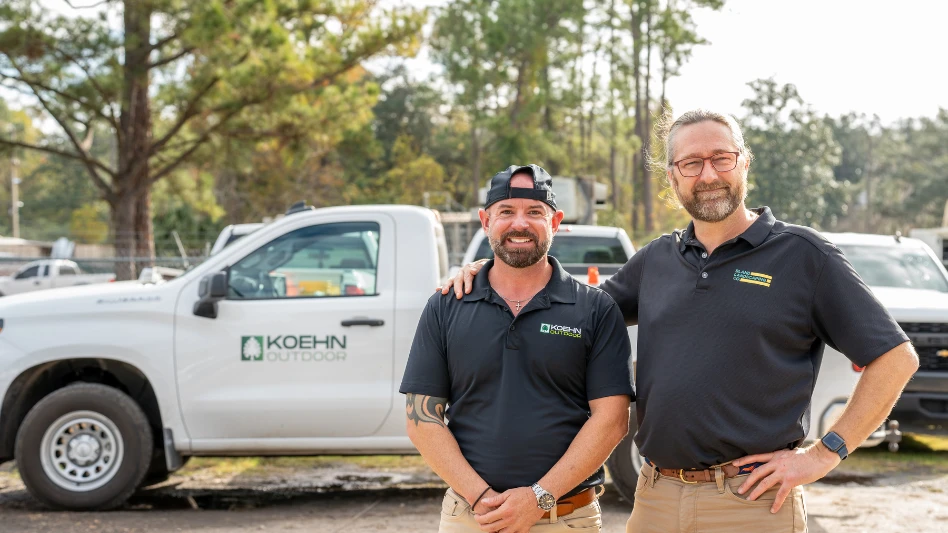 Landscape contractors all do something well – stellar customer service, super-efficient routing, maybe they’re just really good at cutting grass. The key to success, and standing out from your competition, is finding that thing, and doing it over and over and over again, according to Jack Trout.
Landscape contractors all do something well – stellar customer service, super-efficient routing, maybe they’re just really good at cutting grass. The key to success, and standing out from your competition, is finding that thing, and doing it over and over and over again, according to Jack Trout.
Trout is a marketer and author who developed the theory of positioning in 1980. It deals with the practice of differentiating a product in the mind of the potential customer – like, making one landscape company stand out among a field of dozens.
Trout was in Akron, Ohio, recently promoting his latest book, In Search of the Obvious, which explains the core principles necessary for a successful business: Essentially that any good plan or company should be simple, clear and, well, obvious. Afterward, he took questions from the audience, and Lawn & Landscape got a chance to participate.
While Trout’s clients have included big name firms like Apple, IBM and Xerox, his marketing advice holds true for small businesses.
What’s one thing a small business can start doing today to market better or market smarter?
Specialization. Get really good at one thing and communicate that to your marketplace. That’s the future of good small operations. Don’t try to become everything for everybody; don’t chase other people’s business.
How do you defend your position when a competitor with a bigger marketing budget steals it?
With great difficulty. There is no easy way out of that one. You’re going to have to spend some money.
It’s the 22nd Immutable Law of Marketing: Without proper resources, even the best idea will not get off of the ground. You’ve got to have enough resources. It’s interesting because people always ask me, ‘If you redid the laws, what would you change?’ I would only add a law. I would add the 23rd law, and it’s called the Law of Top Management. Unless you have top management involved, you will have no success. The CEO has to be aboard on all of these strategies.
How important is the CEO?
Let me give you a Peter Drucker quote. Many years ago, Peter Drucker, the father of management consulting, wrote a book, and said something that absolutely nailed it and has been totally ignored over the years. He said: ‘The purpose of a business is to generate new customers. Only two functions – two – generate new customers: marketing and innovation.’ He said every other function is nothing but an expense.
Look at what CEOs at a lot of big companies do. They work on finance or they work on manufacturing stuff or they work with the board. That idea has been lost in the shrouds of history. In a competitive world, Drucker is absolutely correct – marketing and innovation. That’s really where top management has to be.
Talk about the nuts and bolts of repositioning for a small firm that doesn’t advertise.
The strategy of a small firm against bigger players is specialization. You have to specialize in one area and build yourself around that specialization because people will think you’re pretty good since that’s all you do. Small guys have to play specialization. Big guys can try to be everything to everybody. The crowd in the middle gets really squeezed.
If you’ve missed the opportunity to move forward and are positioned poorly, what do you do?
Go for another job. You’ve got to sort it out and say, ‘Where do I go next?’ This is the GM problem: Where do we go next? We’ve missed a lot of timing. The problem is when you hit that situation, chances are you don’t have a lot of money, chances are you’re broke, and now the law of resources kicks in, so that’s a tough spot to be in. Branding is a slow process; it takes time and money.
How long does it typically take for a repositioning strategy to get traction?
It took Lotus about four years, a lot of PR and a lot of effort. It’s almost a direct equation of money – how much money you pour into it. If you spend a lot of money, you can do it quicker. If you spend less money, it’s going to take a little bit of time. And it just takes some consistency.
In these tough times, when so much is uncertain, is it better to take a wait-and-see attitude, or get busy repositioning?
I would get repositioning if I could. The bad news is it’s ugly out there. The good news is there’s not a lot of noise out there. A lot of your competitors are frozen in place, so what you have is running room now. You have a chance to get out there if you have the resources to get out there, and you don’t have a lot of people saying the same thing and jumping all over the place. In other words, there’s a certain silence you can take advantage of. So I would much rather use this time to figure out what to do and do it as soon as I can while the noise level is down and your competition isn’t doing very much. Silence is golden in this particular case.
Is there an example of effective positioning where you’re not directly taking on a negative, but affirming a positive for a category that moves a brand, where you’re not repositioning against the competition?
Yeah, sure, but you’re more in the positioning game when you’re taking advantage of an attribute. When I talk about repositioning, normally, you see two issues: You’re either hanging a negative on your competition or you are adjusting perceptions about yourself in a changing marketplace.
If you’re Pepsi Cola going against Coke, and using ‘The New Generation’ …
The problem with Pepsi and Coke is, essentially, they’ve never been consistent. Coke has one, powerful, simple idea, which they dropped years ago: ‘The Real Thing.’ They never should have changed that.
And Pepsi had a very good idea: ‘The Choice of the New Generation.’ So you had: This is the youthful drink, and this is the real thing. Those are the underlying strategies those colas should stay with and never change. Now they’re in slogan land – these meaningless, silly slogans. Meanwhile, the category is going down; people are drinking less cola. And then Pepsi changes its logo. What the hell for? That’s ridiculous. And it’s a change you can hardly even notice. In fact, they made it worse. They’re just floundering. They haven’t got a strategy. Coke should go back to ‘The Real Thing’ and reintroduce that.
How far should a company go with customer segmentation? What’s a good rule of thumb?
I think segmentation gets a little nutty, to be honest with you. It adds levels of complexity when you start getting into the segmentation game. You have a product, and you have a market. If you’re starting to say that market breaks up into five segments, all right, well, which ones are you going to go through? Which ones does your strategy work for? If you’re after a segment that is quality-oriented, whatever it is, rarely can you say, ‘I’m going to have the same idea working in five different groups.’ It gets very complicated.
Does our positioning role change now that so much of the conversation is happening user to user online?
Online stuff? Look. Online stuff is a tool. It’s a new tool. It’s a new medium reaching your marketplace. Don’t get nutty about this online stuff; I mean, it’s a tool. About 10 percent of the marketing dollars in America go online. Ninety percent go to traditional means. All you’ve got to say is, ‘How do I use the new tool?’
To be honest with you, it’s really still a work in progress. A lot of companies are still groping around. You should take your positioning strategy – the same ideas you develop for other traditional media – and put it online.
You’ve got to approach a Web site like you approach an ad: ‘What’s my position and what’s my strategy?’ Is it visible? How do I handle it?’
Is it possible to overdo repositioning? If so, where do you draw the line?
With repositioning, chances are you do it once. You have to sort of evolve in a way. And evolution is a slow process. You don’t do a lot of it.
Has anyone done a better job of continuously repositioning than McDonald’s?
Yes. I don’t like McDonald’s, to be honest with you. They’re successful because they’re inexpensive. Look, ‘I’m lovin’ it’ is not a good idea. Essentially, McDonald’s strategy should be, ‘The World’s Favorite Place to Eat.’
I’d say BMW with ‘The Ultimate Driving Machine for Almost 25 years’ is hanging in there with that basic concept. I would not give McDonald’s high marks; I would give BMW very high marks.
How do you combat a fear of positioning when a be-all-things–to-all-people strategy seems safer?
You’ve got to point out companies like AIG. I mean, here’s an everything-for-everybody insurance company. Years ago, I was working with them, and I said you should be America’s answer to Lloyd’s of London, because that’s the kind of insurance they were doing way back when. No, they wanted to be everything. They wanted to do indemnity, they wanted to do property, and the next thing you know they’re doing the kind of weird stuff that took them over the cliff.
So, in a way, your best strategy is to simply point out that not too many companies find happiness trying to be everything to everybody. How can you own an idea in the mind? You can’t own everything in the mind. Everything to everybody means you’re sort of nothing in the mind. That’s the problem.
The author is associate editor of Lawn & Landscape. He can be reached at cbowen@gie.net.

Explore the July 2009 Issue
Check out more from this issue and find your next story to read.
Latest from Lawn & Landscape
- Analysis of an entrepreneur
- Terra Nova's Sedum Conga Line variety wins Best of 2024 Perennial award
- Different ways to distribute
- Case's 580EV electric backhoe loader wins Good Design Award
- Davey Tree promotes Dan Herms to VP, GM of Davey Institute
- Caterpillar's Cheryl H. Johnson set for April retirement
- Registration open for sixth annual Lawn & Landscape Technology Conference
- 12 interview questions to help you hire winners





